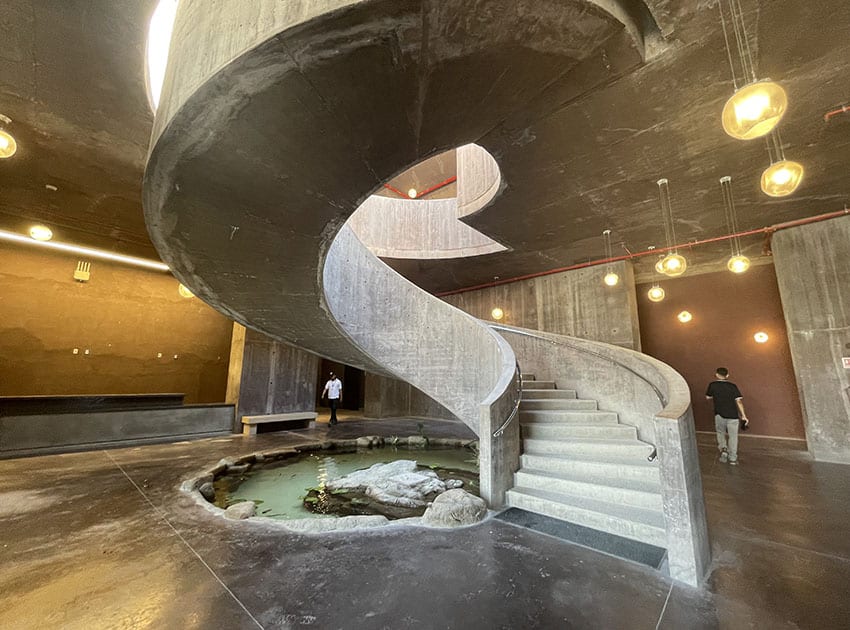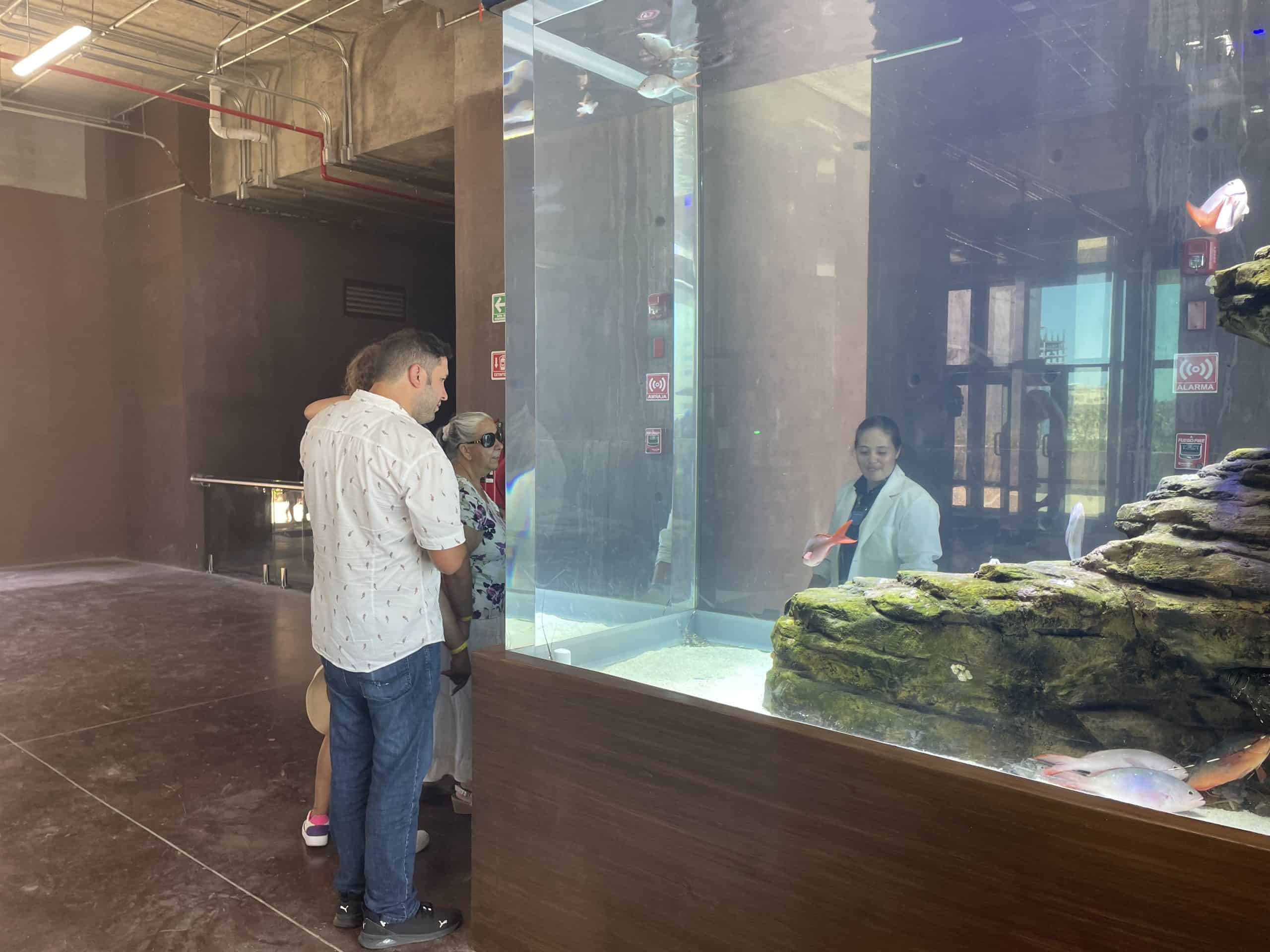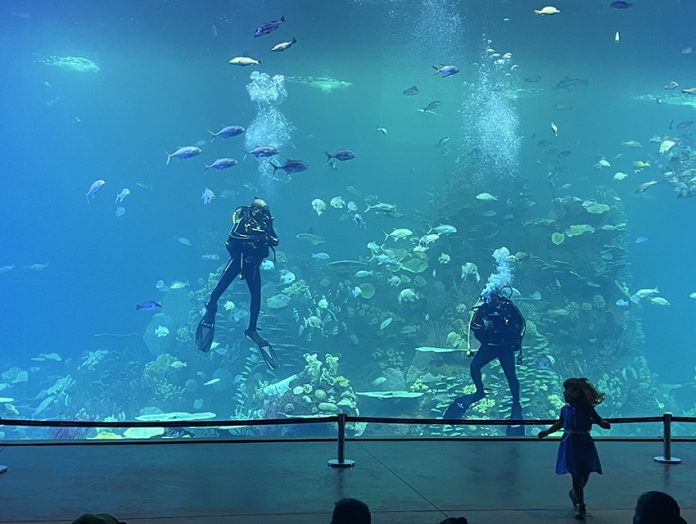My first impression as I walked into Mazatlán’s new aquarium was confusion.
Several paths diverged near the entrance, all seemingly heading toward the imposing concrete walls of the aquarium. The first of many helpful guides pointed me on my way, explaining that the signage and maps weren’t quite ready yet and encouraging visitors to enter with a spirit of exploration.

It did take some exploring to find the entrance, but it was worth the effort: inside was a magnificent celebration of northwest Mexico’s unique wildlife and marine ecosystems.
The Gran Acuario Mar de Cortés (Sea of Cortez Aquarium) is Mazatlán’s newest attraction — so new that some areas were still under construction when I visited on May 10, a few days after its grand opening.
From the outside, the monolithic building looms ominously over the newly planted gardens and still-under-construction paths, but once inside, my appreciation began to grow. Flowing water and plants cascading down from skylights gave the building a cavernous, almost cathedral-like feeling. I wandered through the different areas of the aquarium, which highlight the land, sea and coastal ecosystems of the Gulf of California (also known as the Sea of Cortez).
The first room showcases technical aspects of maintaining an aquarium, with a series of piano-sized machines filtering, monitoring and adjusting parameters to keep the chemical balance and temperature of the water just right.

Next came terrariums full of snakes, lizards and toads, followed by the first coastal exhibits, including mangroves and a tide pool filled with urchins, starfish and sea cucumbers. In one exhibit, an Instagram-ready artificial wave cascaded down from the ceiling like a waterfall, pummeling a rocky shoal. The signage explained the physics of waves and how some species have adapted to live with constant motion.
A replica coral reef was followed by an enormous shark tank. There is a play area for children and two touch tanks for interacting with rays and starfish (after careful hand washing). At one point during my visit, injured sea turtles in a large tank labeled “Sea Turtle Refuge and Rehabilitation” bobbed up to look at passers-by, apparently curious about the new visitors.
There are also a number of charming smaller exhibits, like a school of shimmering, mirage-like fish – the awkwardly-named Hairfin Lookdown – that showed how marine animals manipulate light to blend in with their surroundings. The fish’s Spanish name, pez espejo (mirror fish), ( seems much more apt.
A visit to the aquarium wraps up on the building’s roof, where visitors can explore a garden of native and ornamental plants that has a view of the city’s Laguna del Camarón (a real, live coastal ecosystem) and the ocean behind it.

While the exhibits were mesmerizing, the real stars of the show were the knowledgeable and enthusiastic guides. During my visit, there was almost always an expert on hand to speak about the exhibits, answer questions and help lost guests find their way.
Most guides I spoke with turned out to be locally trained biologists from the University of Sinaloa’s School of Marine Science or the National Autonomous University (UNAM)’s Limnology and Marine Science Institute, both based in Mazatlán. As the day’s visitors wandered between tanks, guides stationed in each area spoke in depth with groups and individuals about the fish and other species they were seeing and made a valiant effort to keep little hands from tapping on the glass and disturbing the animals.
Getting the aquarium to the point it’s at today has been a long process. After four years of construction, more than 2 billion pesos spent and numerous delays to the opening date, the aquarium celebrated its “grand opening” on May 6.
The formal inauguration, however — originally scheduled for May 15 — was postponed to an unspecified date this month, according to the newspaper Noroeste. When I visited shortly after the grand opening, some key details were still missing: guides told me there will be more signage, printed maps and information modules for non-Spanish speakers (though many guides also speak some English, and at least one guide I spoke to was fluent). Behind temporary fencing, a couple sections of the grounds also appeared to be incomplete.
It’s also quite a change from the old aquarium. Some mazatlecos are unhappy that the ticket price is substantially higher than the old aquarium, even with a locals’ discount. Most international tourists, however, won’t have an issue with the adult price of $380 pesos (US $22). Those familiar with the former aquarium might miss its penguin house and sea lion show, but their closure appears to be temporary: Mayor Édgar Augusto González Zatarain has said both spectacles will be part of the new aquarium in the future.
But until more English-language signage or the planned information modules are installed, the experience will be more rewarding for tourists with at least intermediate Spanish — or who are handy with translation apps. But the architectural beauty and the exhibits will speak to any visitor.

The new aquarium is the result of a public-private partnership, with a third of its initial funding coming from the federal government and the rest from Mazatlán businessman and hotelier Ernesto Coppel Kelly.
If the funding keeps flowing, it’s poised to be an important draw for tourists, a valuable resource for the area’s many marine science researchers and an educational tool for locals and tourists alike.
While Mazatlán might be better known for cheap beer and beaches, the new Gran Acuario offers a window into the region’s rich natural beauty. After all, Baja California Sur isn’t the only state that borders what Jacques Cousteau famously called “the world’s aquarium.”
And though there’s still much work to be done, Mazatlán’s new aquarium is off to a promising start.
- The aquarium is open 9 a.m. to 6 p.m. every day. Tickets are available online at the Gran Acuario website and prospective visitors can keep tabs on updates and changes via the aquarium’s Facebook page.
